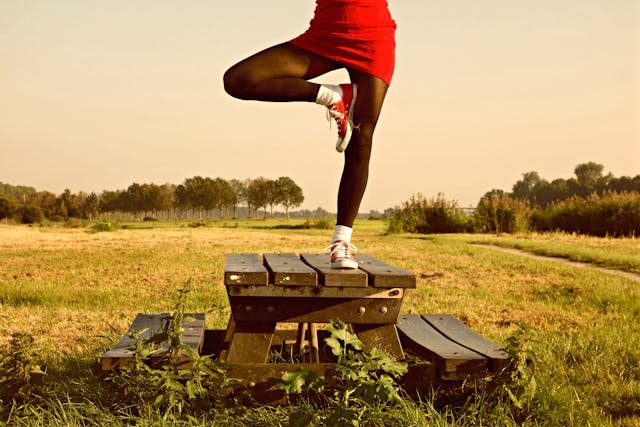
Proprioception, often called the “sixth sense,” is essential for daily movements and athletic performance. It enables individuals to perceive the position and movement of their muscles and limbs without relying on sight. This awareness is vital for maintaining balance and coordinating complex actions. As a crucial component of human motion, proprioception can be improved through targeted exercises that challenge both the body and the mind-muscle connection, resulting in better balance and coordination.
Incorporating proprioceptive exercises into a daily routine can greatly benefit athletes, dancers, and anyone looking to enhance their body control and stability. These exercises often require focus, body awareness, and controlled adjustments, like balancing on unstable surfaces or performing dynamic movements that imitate everyday tasks. The proprioceptive activities guide from Soundsory will provide insights into structured methods of enhancing proprioception in various settings, including developmental programs for children. Please note that this information is intended for educational purposes only. For specific guidance, consult a medical professional.
Key Takeaways
- Proprioception is crucial for balance and coordination.
- Targeted exercises can improve mind-muscle communication and body control.
- Structured activities promote proprioceptive development.
Understanding Proprioception and Its Role in Balance and Coordination
Proprioception, commonly known as the “sixth sense,” is vital for facilitating movement, balance, and coordination. It involves a complex interaction between the nervous system and specific receptors located in muscles and joints.
The Science of Proprioception
Proprioception refers to the body’s ability to sense movement, action, and position without the need for visual cues. This internal sense is governed by proprioceptors located in connective tissue within joints and muscles. These receptors send signals to the brain, which processes the information, allowing an individual to understand the spatial positioning of their limbs. This feedback loop is crucial for precise movements and maintaining posture.
The Importance of Balance and Coordination
Balance and coordination are essential for executing everyday tasks and minimizing the risk of falls. The vestibular system—comprising parts of the inner ear and brain—contributes to balance by detecting changes in head position and movement. When combined with proprioceptive and visual inputs, a person can maintain equilibrium even during complex actions. Effective proprioceptive functioning enhances coordination, enabling the body to respond swiftly to environmental changes.
Effects of Aging on Proprioception and Balance
As people age, the efficiency of proprioceptors and overall proprioceptive capability often declines. This deterioration can result in difficulties with balance and coordination, thereby increasing the risk of falls and injuries. Various exercises can enhance proprioception, particularly those focused on balance and kinesthetic awareness. Regular proprioceptive training can alleviate the impacts of aging on the musculoskeletal and nervous systems, promoting improved balance and coordination among older adults.
Proprioception Exercises for Enhanced Stability and Performance
Proprioception exercises aim to enhance balance, coordination, and the ability to perceive one’s body position. These activities contribute to injury prevention and improved athletic performance by targeting the muscle groups and neural networks responsible for spatial awareness.
Balance Exercises
Developing balance involves both static and dynamic exercises. One foundational exercise is single-leg balancing, where one stands on one leg for a specified period, focusing on stability. Progressions can incorporate yoga poses like the tree pose, which adds a challenge with limb positioning. For those engaged in sports or looking to enhance functional fitness, using a balance board can replicate real-world balance scenarios.
Strength Training and Flexibility
Robust muscles and flexible joints are vital for effective proprioceptive function. Strength-building exercises, such as squats, enhance muscle strength around the knees, thereby improving stability. Combining strength training with flexibility exercises, like Tai Chi, can enhance joint mobility and lower the chances of falls and ankle sprains. A physical therapist may suggest the bird dog exercise to engage core muscles while also targeting stability and coordination.
Dynamic Movements for Coordination
Dynamic and sport-specific movements improve proprioceptive skills through a variety of motions. Athletes can perform drills that simulate their sport’s demands, incorporating changes in speed, direction, and uneven surfaces. For general fitness, dynamic movements such as hopping, skipping, or agility ladder drills can challenge coordination and the body’s response to different stimuli. Developing these capabilities is particularly valuable for injury rehabilitation or to counteract age-related declines in physical activity and stability.
Conclusion
Incorporating proprioceptive exercises into regular fitness routines can significantly enhance balance and coordination. These activities are designed to increase body awareness and decrease the risk of injuries. By practicing movements like single-leg stances and utilizing tools such as balance boards, individuals can sharpen their proprioceptive abilities. It’s advisable to include a variety of exercises to effectively challenge and train the body’s sense of position and motion.







